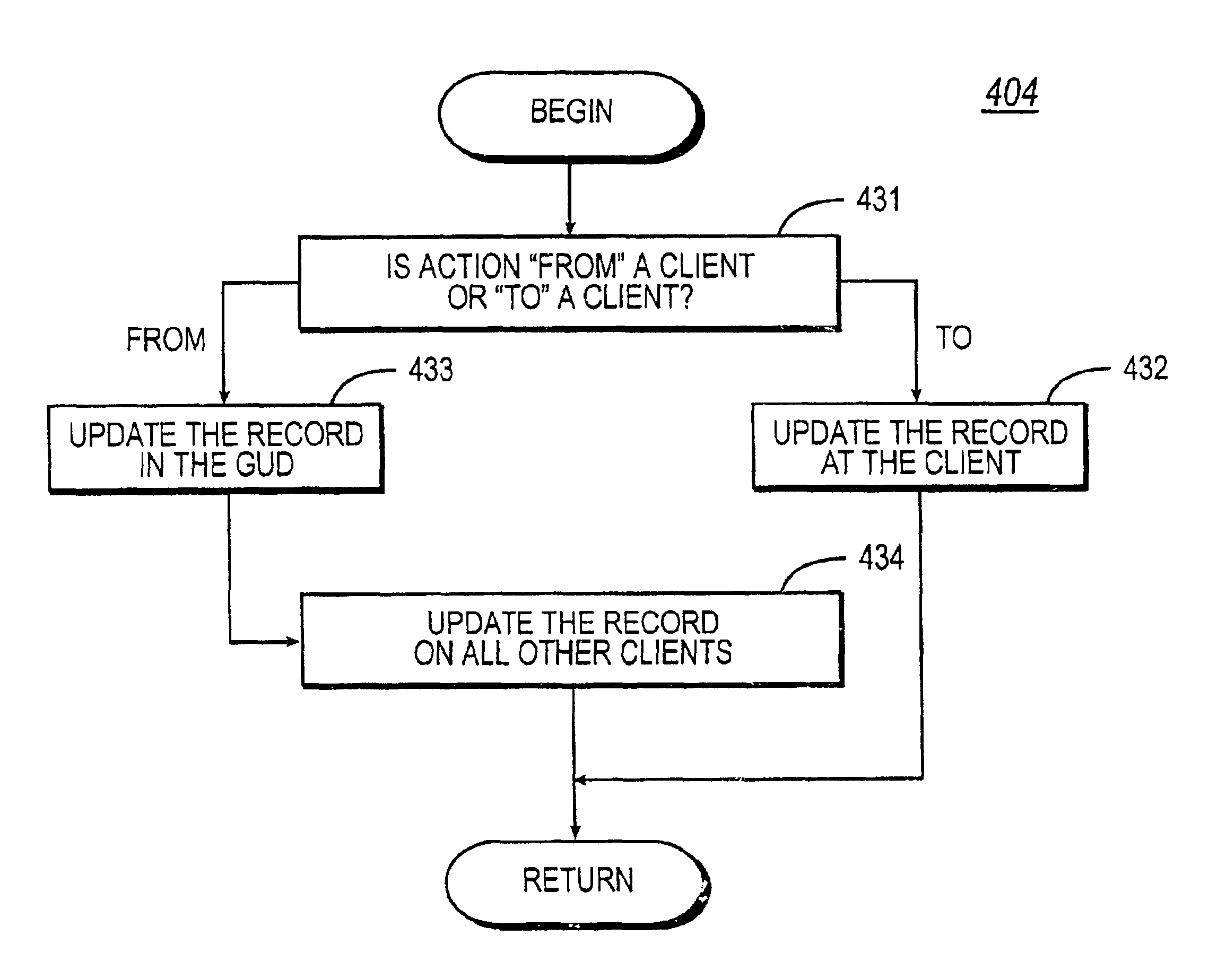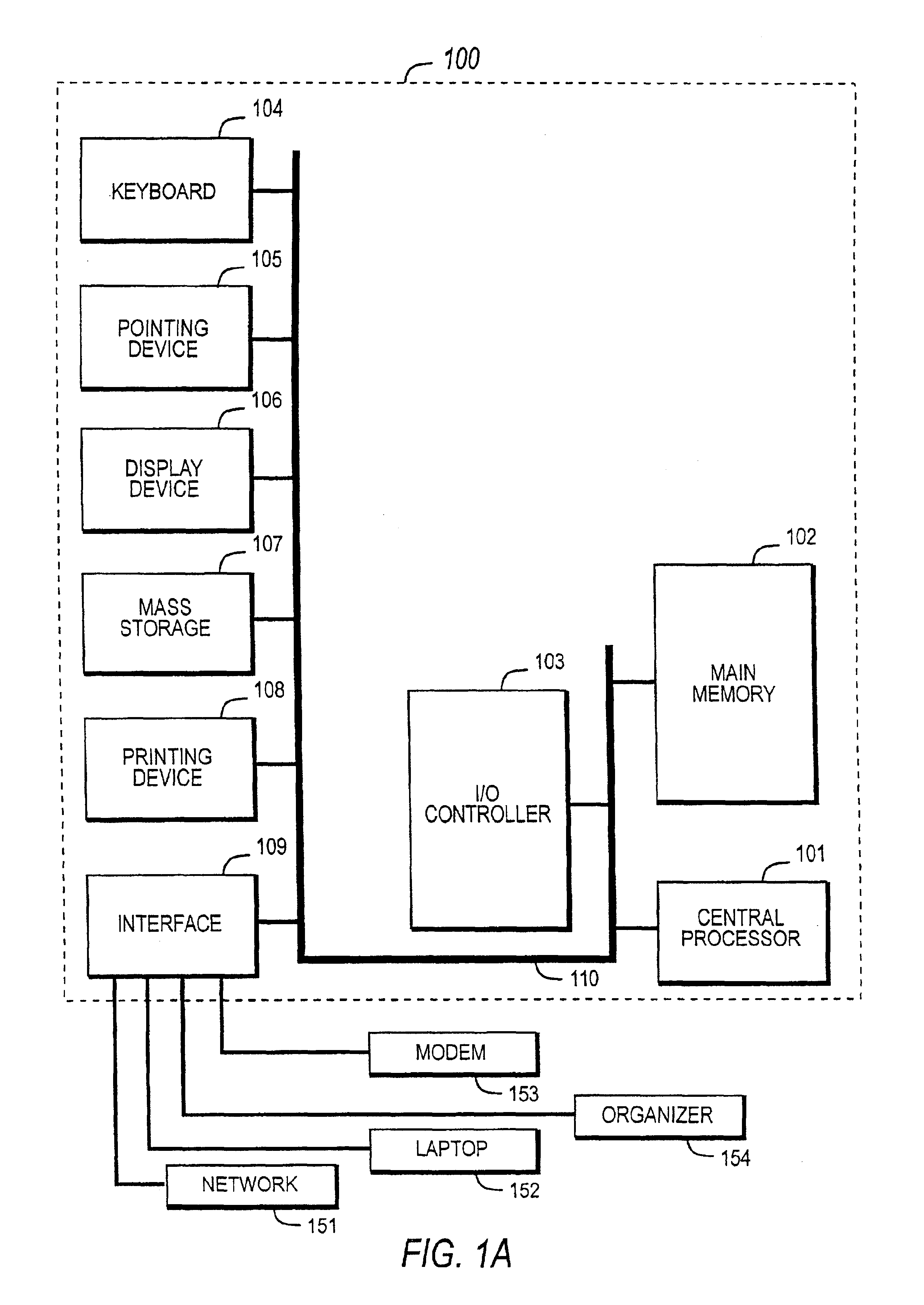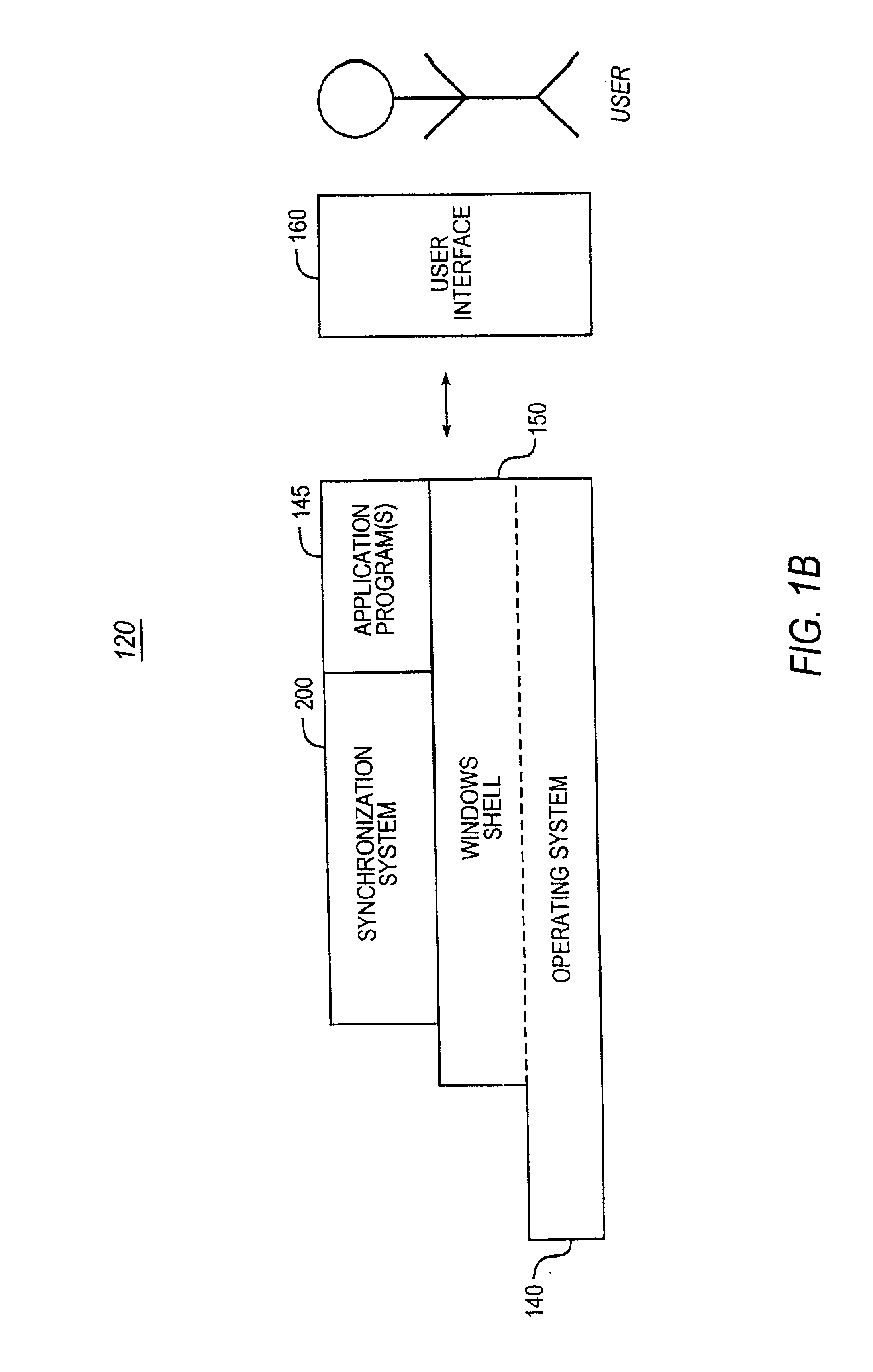Data processing environment with methods providing contemporaneous synchronization of two or more clients
a data processing environment and contemporaneous synchronization technology, applied in the field of information or data management, can solve the problems of time-consuming and error-prone, one integrates disparate information, and the above-point approach is disadvantageous, so as to correct the propagation of information
- Summary
- Abstract
- Description
- Claims
- Application Information
AI Technical Summary
Benefits of technology
Problems solved by technology
Method used
Image
Examples
Embodiment Construction
[0021]The following description will focus on the presently-preferred embodiment of the present invention, which is operative in an environment typically including desktop computers, server computers, and portable computing devices, occasionally or permanently connected to one another, where synchronization support is desired. The present invention, however, is not limited to any particular environment or device. Instead, those skilled in the art will find that the present invention may be advantageously applied to any environment or application where contemporaneous synchronization among an arbitrary number of devices (i.e., “synchronization clients”), especially three or more devices, is desirable. The description of the exemplary embodiments which follows is, therefore, for the purpose of illustration and not limitation.
[0022]The present invention may be embodied on an information processing system such as the system 100 of FIG. 1A, which comprises a c...
PUM
 Login to View More
Login to View More Abstract
Description
Claims
Application Information
 Login to View More
Login to View More - R&D
- Intellectual Property
- Life Sciences
- Materials
- Tech Scout
- Unparalleled Data Quality
- Higher Quality Content
- 60% Fewer Hallucinations
Browse by: Latest US Patents, China's latest patents, Technical Efficacy Thesaurus, Application Domain, Technology Topic, Popular Technical Reports.
© 2025 PatSnap. All rights reserved.Legal|Privacy policy|Modern Slavery Act Transparency Statement|Sitemap|About US| Contact US: help@patsnap.com



